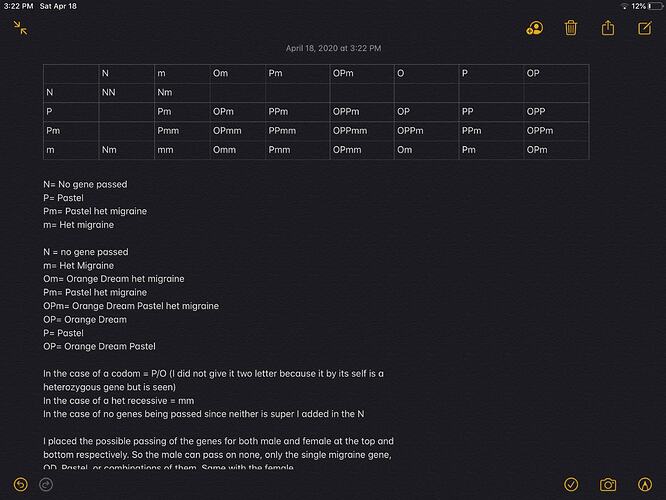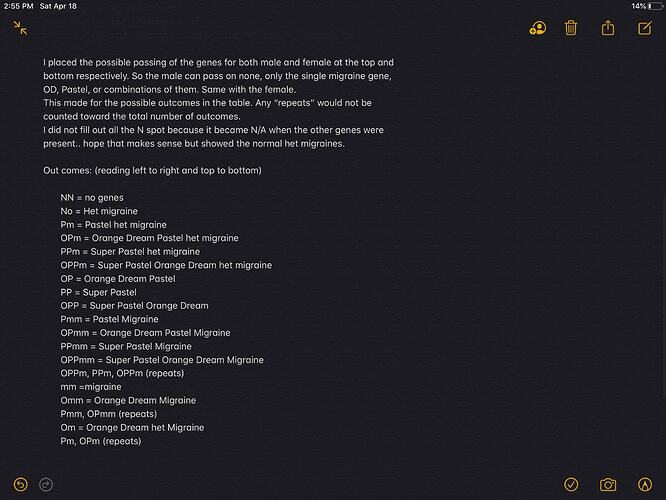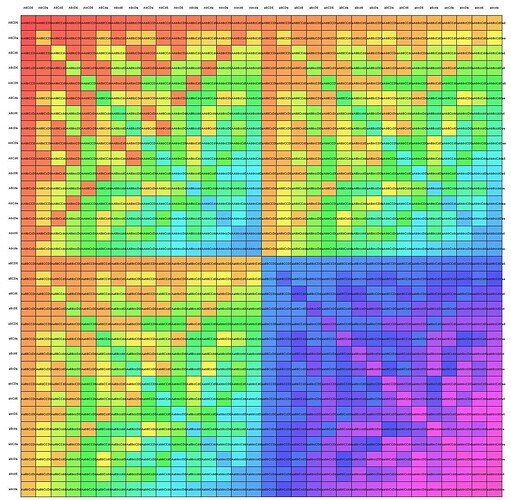Explaining Hets in plain English
Hi,
In the reptile hobby, “Hets” refers to Recessive mutations (such as Albino’s, Clowns, Desert Ghosts etc).
Both parents must carry the gene to produce visual babys.
Note: In reality the heterozygous condition is not exclusive to recessives, as it applies to any situation where two non-alike alleles are present. Pastels and all other single expression inc-dom morphs are heterozygous. [1] However in the hobby, “het” is commonly used when refering to recessive mutations, except in odd examples like HRA.
So if we use Albino as an example (but all recessive gene snakes work the same).
If we have a Visual Albino Male bred to ANYTHING else other than an Albino or anything that is het for Albino, ALL Bbys will be 100% het for Albino because the visual Albino puts his genes into everything he produces.
If we breed a 100% Het to a Normal etc then only half, 50% of the bbys will get some his genes & are called Possible/Poss Hets.
The trouble is with Poss Hets is you don’t know which ones have or don’t have it and can only usually be found out by breeding them.
Although some Hets carry what are called markers where such as Het Pieds for example USUALLY have tram lines at the bottom of their bellies to their cloaca but can’t be relied on 100% so if buying Hets make sure they 100% Hets & from a reputable breeder as theres A LOT of con men out there will say their snake is het when only poss het of even when they know it a normal!
If we breed a 100% Het x 100% Het because both carry the gene you will get some visual Albinos & everything else is classed as 66% Hets as there’s a better chance of the bbys being Hets than if just bred from 1 100% het but still really a guessing game.
So . . .
Visual x Visual = All Visual Albino Bbys
Visual x 100% Het = 50% Visual Albino & 50% 100% Hets
100% Het x 100% Het = 25% Normal.
50% 100% Hets.
25% Visual Albinos.
(Because you can’t tell the difference in Hets & Normals they all classed as 66% hets)
100% Het x Normal =
50% Normal
50% 100% Hets
(These are classed as Poss Hets)
Hope that helps 
D & Jo xx
 … i have no idea if i read Google right, so im likely wrong.
… i have no idea if i read Google right, so im likely wrong.








